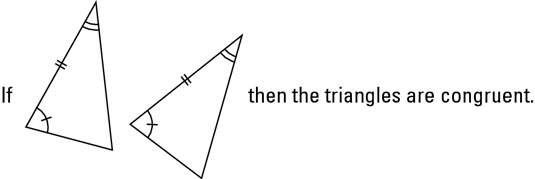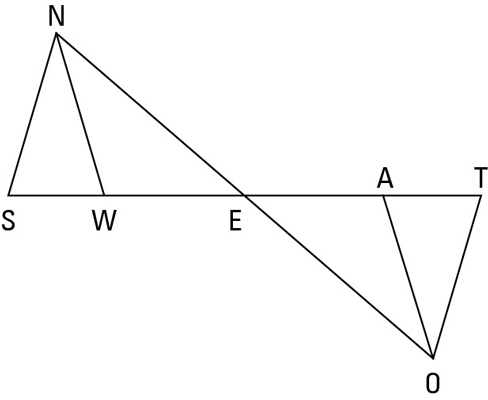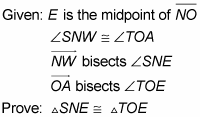The ASA (Angle-Side-Angle) postulate states that if two angles and the included side of one triangle are congruent to two angles and the included side of another triangle, then the triangles are congruent. (The included side is the side between the vertices of the two angles.) The following figure shows how ASA works.

Here’s a congruent-triangle proof that uses the ASA postulate:


Here’s your game plan:
-
Note any congruent sides and angles in the diagram. First and foremost, notice the congruent vertical angles. (When intersecting lines form an X, the angles on the opposite sides of the X are called vertical angles.) Vertical angles are important in many proofs, so you can’t afford to miss them.

So now you have a pair of congruent angles and a pair of congruent sides.
-
Determine which triangle postulate you need to use.

A quick glance at the bisected angles in the givens makes the second alternative much more likely.

That’s a wrap.
Here’s how the formal proof plays out:
Statement 1:
Reason for statement 1: Vertical angles are congruent.
Statement 2:
Reason for statement 2: Given.
Statement 3:
Reason for statement 3: Definition of midpoint.
Statement 4:
Reason for statement 4: Given.
Statement 5:
Reason for statement 5: Given.
Statement 6:
Reason for statement 6: If two angles are congruent (angles SNW and TOA), then their Like Multiples are congruent (twice one equals twice the other).
Statement 7:
Reason for statement 7: ASA (using line 1, 3, and 6)

